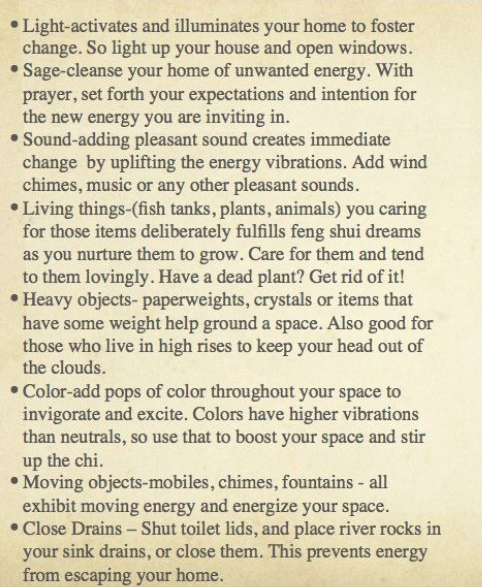One of the Five Arts of Chinese Metaphysics, fen shui, or wind-water, is a ancient traditional belief system that guides and governs the energy forces within architectural structures.
Closely linked to Taoism, feng shui practice discusses the arrangement within architecture in terms of the “invisible forces“ that bind the universe, earth, and humanity together, known as qi. In traditional Chinese culture, qi is believed to be the vital force, life force, energy flow, or material energy forming part of every living entity. Qi, in relation to feng shui, includes the orientation of a structure, its age, and its interaction with the surrounding environment, including the local microclimates, the slope of the land, vegetation, and soil quality.
The use of feng shui is dated back as far as 5000 BC to the Yangshao people that lived along the Yangtze River in China. Between 4700 BC and 2900 BC, the Hongshan people in Northeast China, who interacted with the Yangshao, adopted feng shui into their culture. Before the magnetic compass, feng shui relied on cosmography to set the orientation of structures. Early Chinese astronomers utilized a gnomon, or the part of a sundial that casts the shadow, as the first instrument to use circumpolar stars to determine the north-south axis of settlements. Rituals for using a feng shui instrument required a diviner to examine current sky phenomena to set the device and adjust their position in relation to the device. The magnetic compass was in fact originally invented by the Han Dynasty for the purpose of divination and feng shui.
In Western civilization, feng shui has become widespread, and is commonly utilized in interior design and architecture.
Bagua

In Yaodian, the cardinal directions are determined by the marker-stars of the mega-constellations known as the Four Celestial Animals:
East: The Azure Dragon (Spring equinox)—Niao (Bird 鳥), α Scorpionis
South: The Vermilion Bird (Summer solstice)—Huo (Fire 火), α Hydrae
West: The White Tiger (Autumn equinox)—Mǎo (Hair 毛), η Tauri (the Pleiades)
North: The Black Tortoise (Winter solstice)—Xū (Emptiness, Void 虛), α Aquarii, β Aquarii
You can use the bagua diagram in your own home, by using a compass, or the compass app on your phone, to check how you have intuitively placed things around your home, and re-arrange accordingly. Using the bagua diagram can, if anything, be an excellent way to decorate and arrange parts your home with intention!
Quick Tips for Feng Shui in a Modern Home

Image Courtesy of Gates Interior Design
Learn about Color Therapy to utilize more elements of Feng Shui in your modern home!

